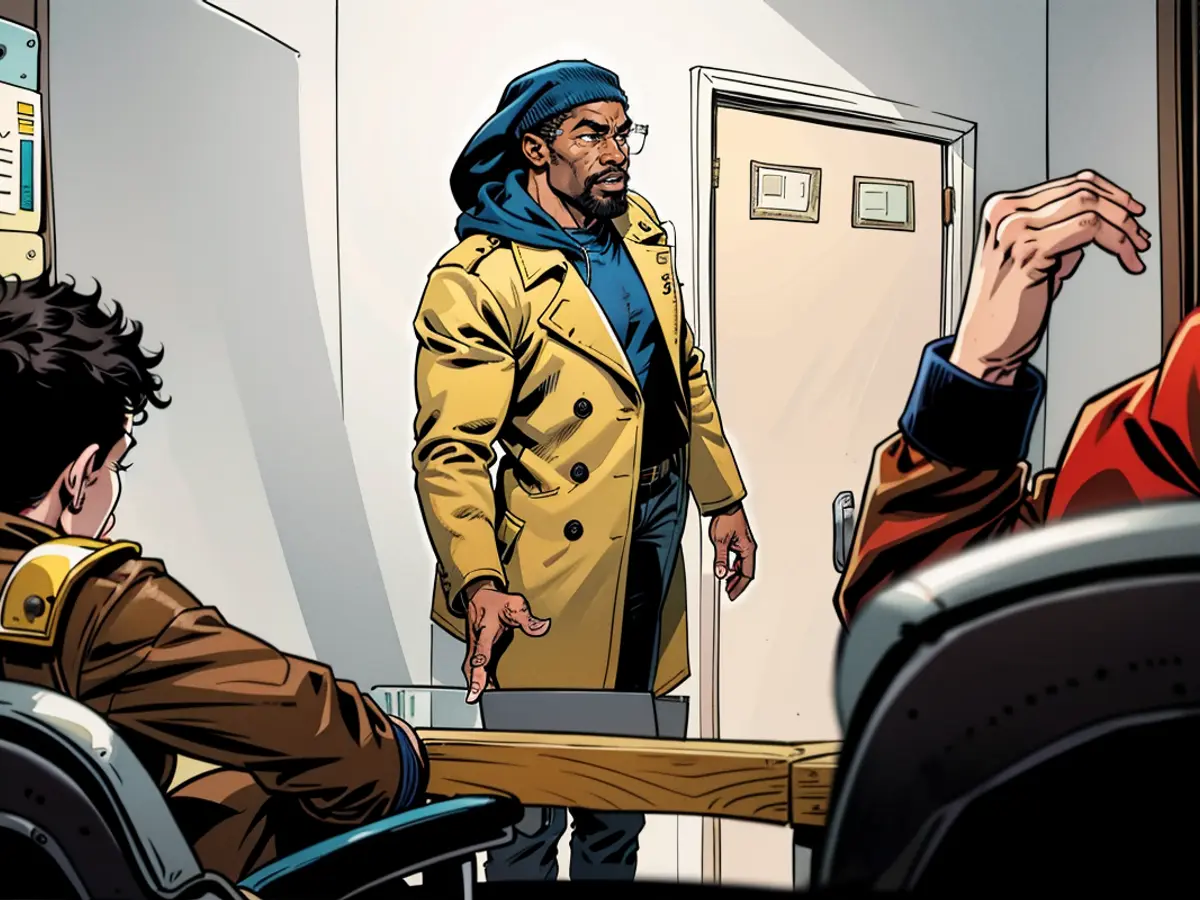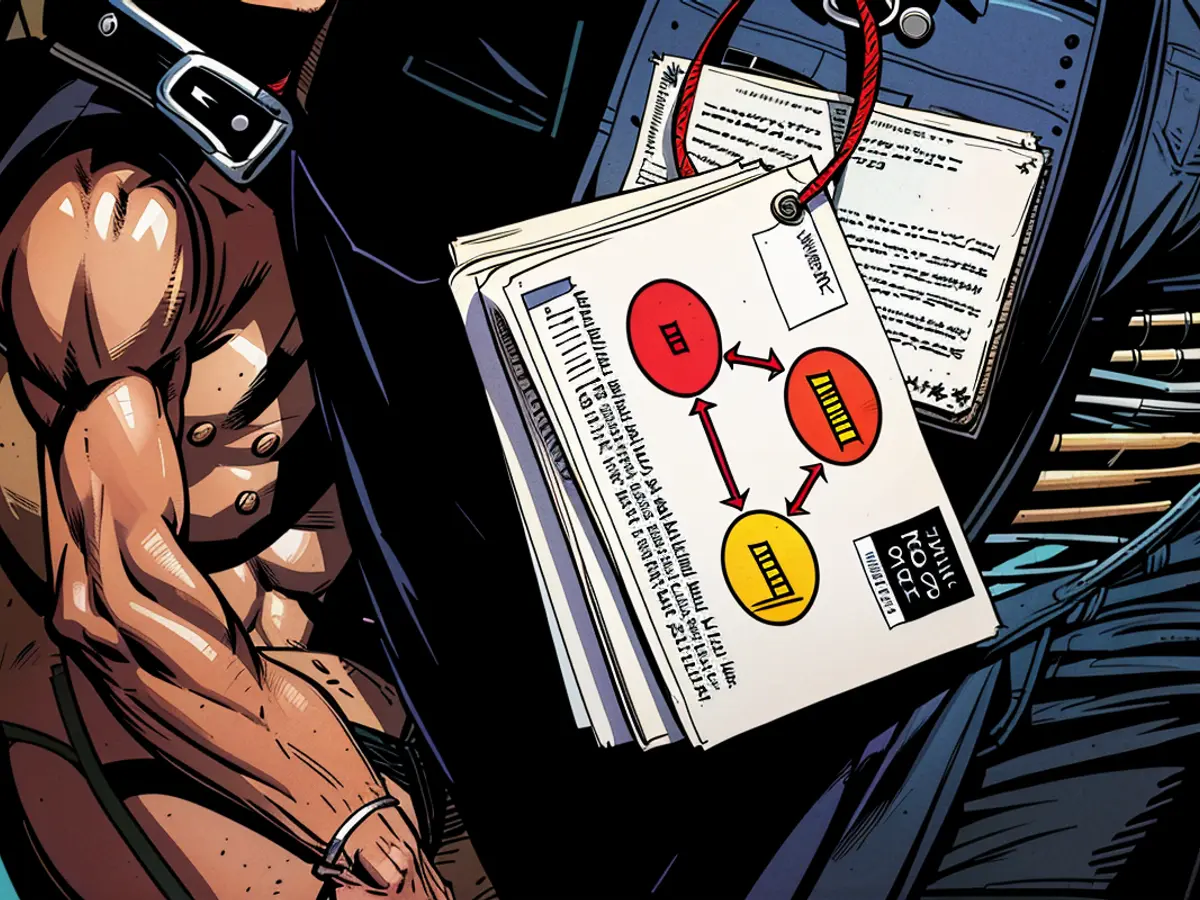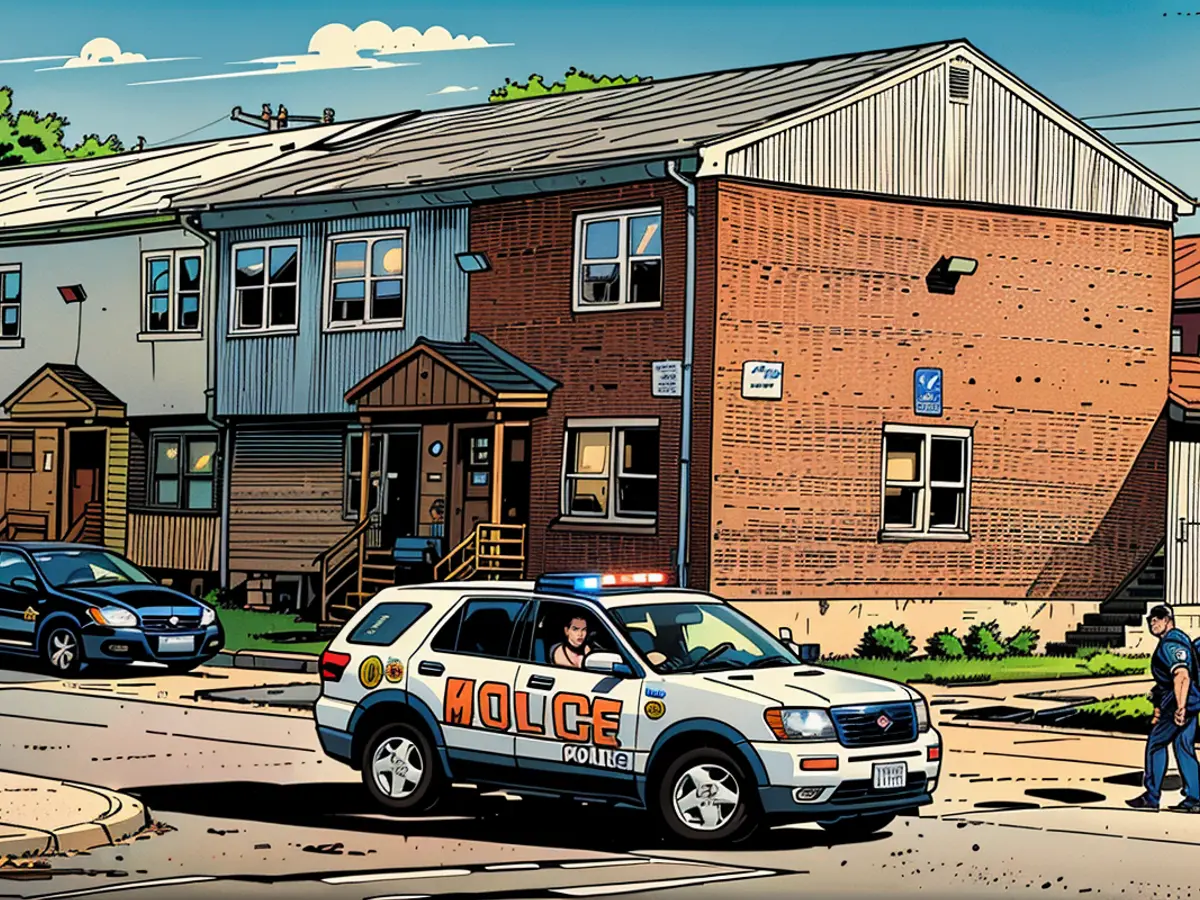Decrease in Violent Crimes Observed Nationwide; Discovering New Strategies for Community Safety in Three Notable Cities
For decades, the local business on Frederick Avenue in Irvington's southwest area offered neighbors a sanctuary from gangs and dealers. It was a place where people could converse freely about music, family, and friends without fear of being targeted for violence or robbery. As Scott explained to CNN, this barbershop was the only place where people felt comfortable talking to genuine individuals.
Recently, this safe space has grown bigger.
The mayor's office, through its revitalized Group Violence Reduction Strategy project, conducted a raid on the long-standing drug trafficking organization that had been causing trouble in the neighborhood and contributing to citywide violence. Twelve individuals were indicted on drug and weapon charges, according to Scott. The mayor's Office of Neighborhood Safety and Engagement played a role in investigating the alleged crime syndicate. The mayor then issued a warning to anyone unwilling to accept this office's reverse mission, which focuses on discouraging violence before it occurs.
"Take advantage of our potential to change your life," the mayor said, "or risk finding yourself in trouble with the law, possibly facing indictment and imprisonment."
The strategy appears to be effective based on certain indicators.
The Group Violence Reduction Strategy, which aims to reduce shootings through a collaborative effort between law enforcement, social services, and community members, led to a 21% annual decrease in homicides in Baltimore last year, according to Scott. The reduction in violence was even more significant this year through July 8, with homicides dropping by 34%. Police statistics support these figures.
Similar trends have emerged in other cities, such as Detroit and San Antonio. These cities attribute their recent reductions in crime to their investments in crime-fighting strategies that go beyond traditional arrest and prosecution, incorporating social services, community support, and some funding from the 2021 American Rescue Plan Act.
The overall rate of violent crime dropped by 3% from 2022 to 2023, according to FBI statistics released in October. This drop also included a nearly 12% decrease in murder and non-negligent manslaughter, marking one of the largest declines in decades. This data is crucial for the forthcoming 2024 elections, as both Republicans and Democrats seek to position themselves as tough on crime.
Crime trends can be intricate, influenced by various social and economic factors. However, Baltimore officials view the Group Violence Reduction Strategy as a vital component in the city's battle against crime, particularly their efforts to foster community involvement.
"We're dealing with a severe lack of trust between the government and the community," stated Stefanie Mavronis, director of the neighborhood safety office. She cited lessons learned from Freddie Gray's 2015 death in police custody and the subsequent protests as evidence.
"Community involvement is crucial for solving our problems, and we need to be a collaborative part of the strategies moving forward," Mavronis added.
Scott re-branded a previous city program as the Group Violence Reduction Strategy in 2022, focusing on a "focused deterrence" pilot in the city's Western District, which had been plagued by high murder and shooting rates for nearly a decade.
Law enforcement, social services providers, and community members collaborate to identify people at the highest risk of being victims or perpetrators of gun violence. They then offer financial assistance for substance abuse treatment or job placement counseling. The strategy costs around $7.3 million annually, funded by the city's general budget and additional federal, state, and philanthropic resources.
The aim is to tackle the fundamental issues that lead to violence, like in the area surrounding the barbershop. Malik Blandon bought the shop from Scott's cousin in 2018.
Blandon told CNN that since the city-backed raid on the alleged drug ring, the area is "more calm and quiet." However, Blandon, like other US city residents who have witnessed a decrease in crime followed by a resurgence, cautioned that "gun violence hasn't vanished. No matter how many times they dismantle one group, another one will emerge."
Detroit's community-centered approach

Similarly, Detroit is implementing a community-driven anti-violence strategy. Deputy Mayor Todd Bettison often observed how effective community groups were at diffusing neighborhood tensions during his nearly 30 years with the city's police department.
Bettison, who became the mayor's deputy after rising through the ranks, often enlisted these groups to alleviate Detroit neighborhoods, complementing the efforts of law enforcement. However, he couldn't provide these organizations with any substantial financial support due to city procurement rules and priorities at the time.
The American Rescue Plan Act changed this in 2023, allowing Detroit to fund the violence intervention program ShotStoppers. Several community groups receive $700,000 annually to develop their strategies to reduce homicides and shootings in a 3.5 to 4.5-square-mile section of the city. Up to $700,000 more in bonus funds are available annually.
As of now, FORCE Detroit, which serves the far west side, has been the most effective of the initial six groups. Its approach emphasizes addressing residents' fundamental physical and psychological needs, including access to housing, food, employment, and financial security, among other objectives.
Each strives to advance the forefront of their work: community violence reduction. To accomplish this, they rely on established "trustworthy figures" to step in when ordinary disputes threaten to escalate into gun violence. Numerous messengers have previously been perpetrators or victims of gun violence themselves – often both, stated Dujuan "Zoe" Kennedy, FORCE Detroit's executive deputy director of programs, who fits this description perfectly.
Kennedy became involved with a gang at a young age, he mentioned, a path that eventually led to the killing of a friend. He was charged with second-degree murder and pleaded guilty to manslaughter, he shared. Shortly after leaving prison, Kennedy encountered FORCE Detroit's founder and executive director, Alia Harvey-Quinn, and they became good friends. Now, they collaborate.
Kennedy's dedication to transformation is a key characteristic of these trustworthy figures, who are expected to maintain frequent contact each week – through social media, phone calls, text messages, and in-person visits – with those at risk of engaging in violence. These contacts can serve various purposes, such as defusing conflicts on social media, gathering information, or motivating individuals to avoid violence.
Harvey-Quinn explained that the ultimate objective is to build relationships that FORCE Detroit can leverage for intervention when required.
The results are evident: FORCE Detroit witnessed a 68% decrease in homicides and non-fatal shootings within its zone from November to January compared to the same period the previous year; from February through April, it recorded a 62% shift, according to city statistics.
These outcomes surpassed statistics in other ShotStoppers zones and significantly outperformed improvements in areas of the city overseen by no ShotStoppers group, earning FORCE Detroit performance incentives of $175,000 in each of the two quarters, as per the city.
"I believe people have been surprised," Harvey-Quinn said, referring to residents' reactions to FORCE Detroit's program. "Surprised by the authenticity and depth, surprised that individuals care about these issues and are willing to participate."
"And then that triggers a set of honor codes within our community that people have abandoned, often because they feel no one cares," she added. "Once they feel that individuals care, they show up and protect the work and the organization."
Police also recognize the value. Assistant Chief of Police Charles Fitzgerald described the community violence reduction effort as "an exceptional layer" law enforcement can rely on to help decrease violent crime.
"It's been a valuable tool," he told CNN, "and we hope it continues."
For now, it will. In June, the mayor's office announced that FORCE Detroit was one of four groups whose ShotStoppers' contracts would continue another year, as the city also aims to expand the program.

A 3-phase strategy in San Antonio
On the other hand, major US cities like San Antonio have adopted a contrary approach to Baltimore and Detroit.
San Antonio is actively implementing a three-phase Violent Crime Reduction Plan formulated by criminologists at the University of Texas at San Antonio and also used in Dallas, Salt Lake City, and Tacoma, Washington.
The strategies have been around for decades, but they have never been implemented together in this fashion, stated UTSA criminologist Michael Smith.
Thus far, only the first phase has been completed in San Antonio: a "hotspot policing" initiative that boosts police presence in areas linked to crime. The second phase, still in development, and the third phase will address the underlying factors contributing to crime.
For phase one, authorities divided San Antonio into a 300-meter-by-300-meter grid, then analyzed which of the 133,000 cells experienced the most violent crime and when, Smith explained. Officers patrolled in these areas when crime levels were highest for 15 minutes at a time, he added. Every 60 days, the grid analysis was updated, and police resources were allocated to cover the most problematic 35 or so cells, Smith explained.
The outcome was a 37% decrease in violent crime in high-crime areas compared to the previous year, an improvement that UTSA criminologists and the city's police department attribute to a contributing factor in the overall 7.3% reduction in violent crime in San Antonio in 2023, according to the UTSA report.
"When this plan first began, not many individuals were excited about it because it appeared too simple and – quite frankly – rather dull," San Antonio Police Chief William McManus told the city's Public Safety Committee in April, according to CNN affiliate KSAT. "But the fact of the matter is, it's working, and I think everyone has grown accustomed to it by now."
However, the program has not been universally well-received.
District 2 City Councilperson Jalen McKee-Rodriguez described the first phase of the Violent Crime Reduction Plan as a "surface-level strategy" that did not address the root causes of crime, such as poverty and lack of access to transportation, housing, and healthcare.
Furthermore, the gains are not noticeable for residents: Property crime remains high, McKee-Rodriguez asserted. And while homicides have decreased, the statistics do not account for unaimed gunshots that still resonate through neighborhoods.
"It makes it more difficult for members of my community to accept that crime is decreasing when their fear, their fear for their safety, is still very much present," he said. "I don't know that numbers mean much when people's realities feel different."
The city official is excited, he stated, about moving on to stage two, which the overall strategy refers to as "problem-focused, location-specific policing."
This approach concentrates on locations known for consistent violence, Smith explained, before urging collaborative agencies such as law enforcement, the fire department, parks and recreation, among others, to analyze historical data to comprehend why these areas might foster crime.
Agencies then zero in on solutions: from environmental aspects like garbage, abandoned cars, and inadequate street lighting, to the absence of social services such as after-school programs.

With the first two stages founded on the idea that crime takes place in a limited number of locations, the third phase – centered on deterrence – hinges on the belief that only a small number of individuals are responsible for a disproportionate share of a community’s violent crime, Smith clarified.
This concept, originating from the mid-90s, involves identifying these individuals and summoning them for a meeting with police department officials, prosecutors, and social service agents, who convince them to change their ways and provide resources before caseworkers intervene, in essence mimicking tactics currently being implemented in Detroit and Baltimore.
Although McKee-Rodriguez, the city council member, is more hopeful about the latter stages’ potential to tackle crime's root causes, he emphasized that San Antonio currently boasts a range of instruments, agencies, and strategies designed to reduce violence, such as a "credible messenger" model called Stand Up SA.
“Enlarging this program would be one of the largest investments we can make as a city,” he declared. “It has already demonstrated remarkable success in fostering trust in communities that would not typically put faith in government or city officials or law enforcement.”
‘Safety and homicides are separate realms’
In Baltimore, the innovative approach to public safety already boasts more support than past initiatives due to its intense life coaching, emergency housing, employment aid, and stipend opportunities, according to Scott, a former City Council president.
This time, Baltimore is also addressing "crippling poverty, decades – if not more – of systemic racism, and a shortage of effective leadership," stated Palermo, a Baltimore-based executive vice president for Roca, a partner in the Group Violence Reduction Strategy aiming to disrupt cycles of violence and halt violent tendencies fueled by trauma.
“For the first time in a long time, we now have the opportunity to further reduce last year’s decrease in homicides for two consecutive years,” Palermo informed CNN. “This is not a mere coincidence; this is a comprehensive approach to addressing a public health crisis.”
The investment in community organizations in Detroit represents a "different perspective," according to Bettison, the deputy mayor, including “establishing a system enabling us to evaluate their work above citywide trends, thus allowing law enforcement to appreciate the value of their efforts."
“Now, we can truly appreciate their true worth,” he said.
However, others remain unconvinced. Some Baltimore residents shared with CNN that the city's declining homicide rate fails to affect their sense of security in neighborhoods plagued for decades by gun violence.
“Safety and homicides are two distinct areas,” argued Kelly, a long-term resident and community champion from West Baltimore. “We will never feel safe because we have relied upon our individual experiences.
“We secure our own safety,” he added. “Perhaps in 15 years, these children might feel a little less vulnerable.”
CNN’s Emma Tucker reported from Baltimore, while Andone reported from New York.
The Group Violence Reduction Strategy also involves community members, encouraging them to be a collaborative part of the strategies. (from the text)
Working together with community members has resulted in significant reductions in violence and crime in Baltimore and other cities. (my sentence)









